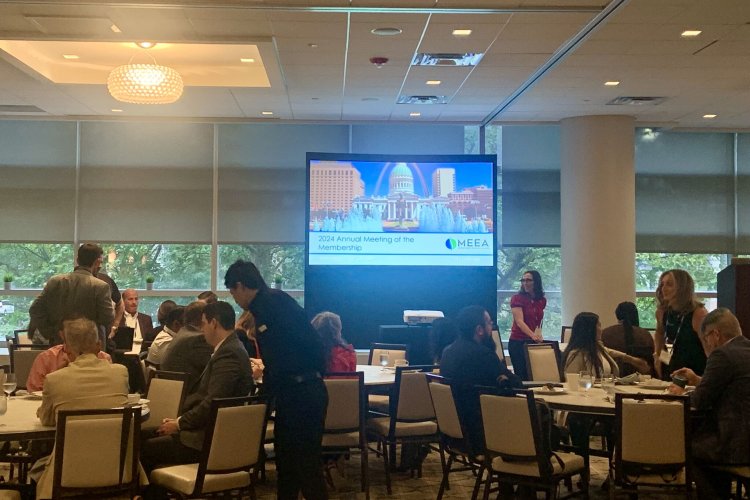
In June, more than 100 MEEA members gathered in St. Louis, MO for a workforce development workshop led by Quinn Parker, Founder and CEO, Encolor and Paul Douglas, President, JPI Group. The workshop continued a conversation that began in our June 5 webinar, Putting the Work in Workforce Development: Overcoming Systemic Barriers for a Diverse Workforce, and will develop further through the new MEEA workforce committee.
During the webinar panelists discussed common barriers and challenges, while participants at the in-person workshop explored solutions to these, and other, challenges. The barriers and challenges highlighted during the webinar are summarized below and on this document that was shared with workshop participants:
- Risk averse employers, including those that are unwilling to hire returning citizens from incarceration.
- The idea that many community members aren’t aware of the clean energy industry or don’t realize the breadth of career opportunities.
- Lack of collaboration between project partners who often have different goals and measure different performance indicators.
- Program designs that may not be rooted in the community they want to serve and often don’t define success or set up ways to measure progress toward the goal.
- Regulatory complexity that can vary by state, by funder and by job responsibilities.
The panelists all agreed that it is important to gather stakeholders to strategize sooner rather than later and look forward to continued conversations with MEEA members.
The in-person workshop kicked off with opening remarks from Quinn and Paul who revisited the challenges discussed during the webinar while adding that most people in the U.S. are employed by small businesses, but workforce programs often target large employers and rarely include small businesses in design and implementation. They further explored the challenges related to the large number of stakeholders with different timelines, different data collection tools and different goals and noted that the day’s discussion need not be limited to workforce development and could include supplier diversity, professional development and other aspect of workforce.
Each attendee was assigned a table when they arrived in hopes of maximizing a diversity of experiences and perspectives in each group and minimizing the number of people who sat with colleagues and friends. During the first breakout session, participants talked through the challenges and barriers that resonated with them, including any that may not have been mentioned. The conversations varied significantly but several groups talked about the costs of training new employees and the challenge this presents to small businesses or any business with tight margins. The lack of a set template to follow when designing a workforce program and the reality that programs likely need to be customized to local conditions was another common theme alongside employee retention and lack of awareness of the industry among job seekers.
During lunch, participants heard from Theresa Collins from Senior Services Plus, Inc. and Fred Stewart from Minority Business Development Center. Both panelists shared how their nonprofit organizations support workforce initiatives in Illinois and each panelist outlined the story of one individual that benefitted from their work. They emphasized the importance of building partnerships, sharing success stories and best practices, and each noted that volunteers are a valued part of their team.
After lunch, participants broke into small groups to brainstorm solutions to help overcome the challenges and barriers that had been identified earlier. As before, the discussions varied but some topics resonated with several groups. The importance of rethinking job descriptions, loosening job requirements and ensuring candidates with a criminal background are not automatically disqualified were themes at a few of the tables. Other groups talked about the importance of engaging directly with job seekers, community organizations and students, including middle and high schoolers, to help raise awareness and/or overcome negative impressions of the clean energy workforce. Another common discussion was the importance of broadening the focus beyond energy savings to include the benefits of workforce initiatives when talking about program success. These groups, and others, also talked about a need to rethink incentives offered by utilities and governments to help encourage investment in workforce initiatives.
The breadth of discussion and ideas highlighted during the brief presentation from each group at the end of the day was inspiring. And, luckily, the conversations will continue through the new MEEA workforce committee and in other venues. Please email Kathryn Eggers if you’d like to get involved with the MEEA workforce committee.